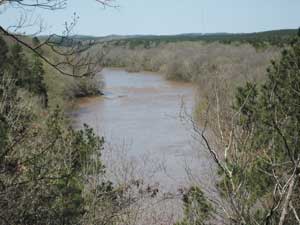 The Cape Fear River is the natural central feature of this area. It is a major source of recreation and part of a huge number of identifying names of businesses and organizations. It is an essential source of water for a major part of North Carolina called the Cape Fear River basin (including Fayetteville), and it should be essential in the development of the economy of the area as it was in the past. The Cape Fear River has recently been put on the list of endangered rivers!
The Cape Fear River is the natural central feature of this area. It is a major source of recreation and part of a huge number of identifying names of businesses and organizations. It is an essential source of water for a major part of North Carolina called the Cape Fear River basin (including Fayetteville), and it should be essential in the development of the economy of the area as it was in the past. The Cape Fear River has recently been put on the list of endangered rivers!
There are numerous Cape Fear River associations and organizations, including the Cape Fear River Assembly, on whose board I serve, that are focused on the river or parts (upper, middle lower) of it. Other examples of organizations include the Cape Fear River partnership, the N.C. Wildlife Association and the River Keepers Alliance, to name only a few.
The CFRA is the largest and most comprehensive association and at one time had about $6 million in research funds and a membership of over 200 communities along the Cape Fear in addition to being the protector of all of the Cape Fear River sub basins.
Lack of leadership and political banter led to waning interest in the river and the water itself. The CFRA’s intent is to serve all three of the Cape Fear regions, and it is in the process of being reinvigorated.
Changes in water quality should get everyone’s attention because we face global concerns about water quantity and quality. The Cape Fear is not immune. We saw a net “interbasin transfer” (aka, loss) of water from the Cape Fear basin to the Neuse basin several years ago to support the growth of Wake County, and there is another (hopefully failed) attempt underway to take more.
Growth and development in the Cape Fear basin are resulting in more water being extracted for that use, with less than all of it returned after treatment. But because of increased total use, more nutrients such as nitrogen, phosphorus and potentially toxic materials are also added back to the river. Discharge is currently regulated by nutrient concentration, not total quantity, as it should be, but this is gradually being changed. Until those changes are implemented, downstream the concentration of nutrients in the water will increase, and water quality will decrease.
It is common to finger-point at specific “residents” of the river basin such as agriculture, or other industries, as culprits. But the fact is, everyone is part of the problem and therefore must be part of the solution.
Agriculture is the most common target as a source of water pollution. The agricultural industries have added many regulations and practice changes to help reduce impacts. Reports following Hurricane Matthew are the most recent cases, citing a small number of animal waste lagoons that overflowed. However, numerous waste treatment facilities in municipalities discharged far more sewage.
The Cape Fear River basin has an impressive number of water quality monitoring stations, and the data from them are readily available. The question is: How do we maintain quality in a river that is not going to get “bigger” (but will probably get smaller) and with more demand for water to support growth and development? Greater treatment costs mean higher water bills, and unfortunately, not all of the contaminants that can end up in water are easily or even possibly removed. So solutions include elimination of contaminants at their source.
It is important that we all take the value and privilege of both quantity and quality of water seriously in every aspect of our lives. It should never drop off the radar. Without adequate and safe water, we cannot survive.
In some parts of the world, access to adequate safe water is a cause for war. Let’s not make that the case in North Carolina.